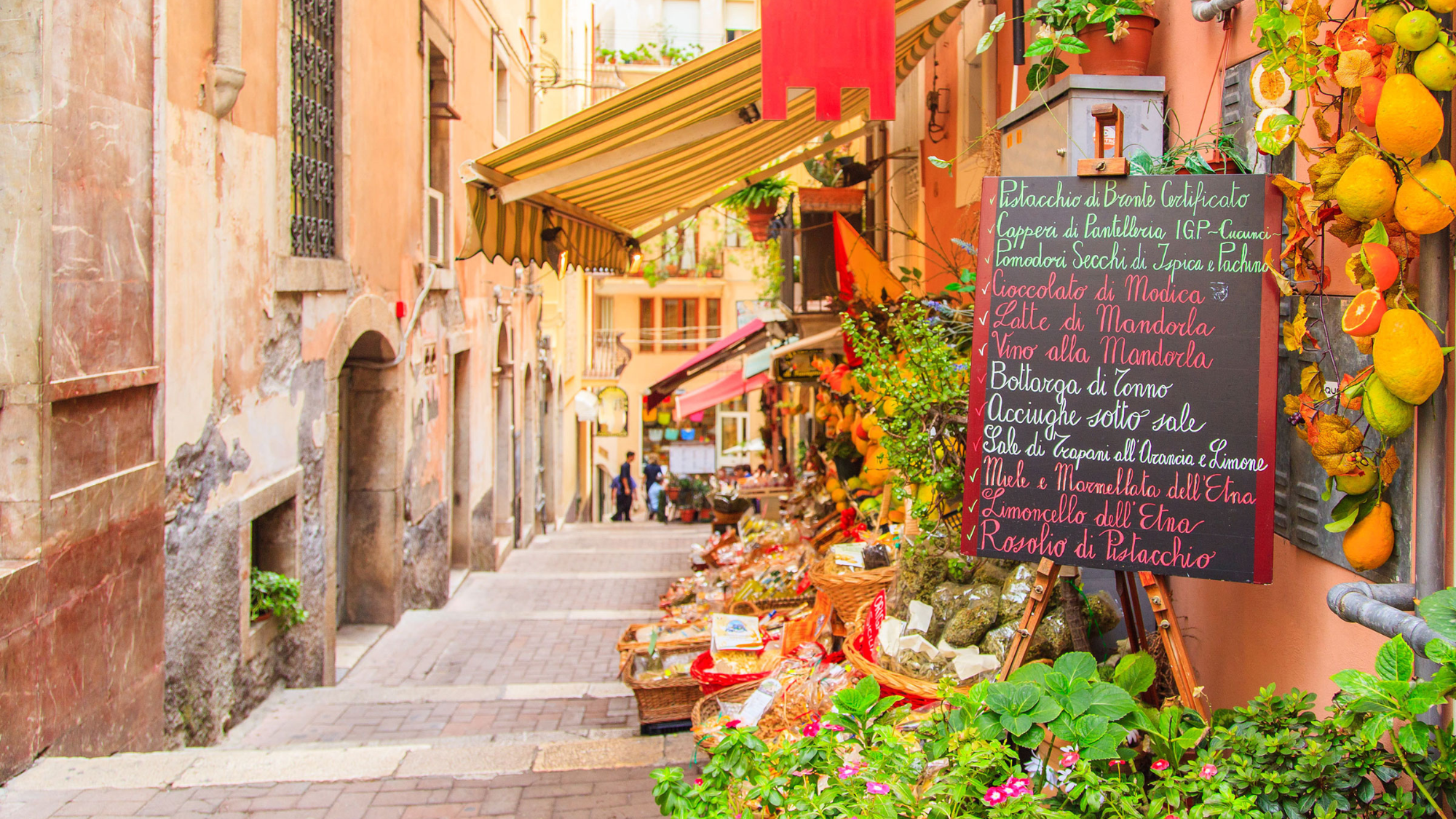Regent Seven Seas Cruises: Scene Stealing Sicily
copy and images by Mari de Armas, Regent Seven Seas Cruises
The first time Mari saw Italy was in the film Cinema Paradiso directed by Giuseppe Tornatore. Lush panoramas, a bustling piazza anchored by a church and its belltower, women making tomato paste on wooden boards — it all captured her imagination. She immediately made plans to one day visit the enchanting village of Giancaldo, only to discover that there was no such town by that name.
CALL ME BY ANOTHER NAME: PALERMO
Pulling back the curtain on movie magic, Mari discovered the real place she dreamed of visiting, which was the capital of the island of Sicily, Palermo. What’s more, she kept recognizing it in other Italian movies, from Roberto Benigni’s Johnny Stecchino to the classic film The Leopard. Some of the city’s most famous landmarks, such as the Norman Palace, the Palatine Chapel, and the Teatro Massimo, made cameos in movies since the 1960s.
Founded by the Phoenicians in the eighth century BCE, Palermo remained a Phoenician city until the First Punic War, when Sicily fell under Roman rule. Years later, Palermo was ruled by the Byzantine Empire, then the Normans, then the Spanish, before becoming a part of Italy. As the most conquered city in the world, Palermo has a wealth of beautiful architecture, from ancient ruins to Baroque palaces. Yet, Sicily’s capital was only the beginning of my cinematic tour of this camera-friendly island.
A BACKDROP THAT CAN’T BE REFUSED: MESSINA
Francis Ford Coppola’s iconic Godfather trilogy shined a massive spotlight on new destinations for Mari to dream of. While Corleone, the birthplace of the family’s patriarch, is a real town in the province of Palermo, the director opted to film in Messina. Movie magic strikes again!
Messina is a living testament to the many civilizations that have traversed it: from Roman, Byzantine, and Arab invasions to the days of glory during Aragon’s reign when Messina became the capital of the Kingdom of the Two Sicilies. Yet, through Coppola’s films, viewers were able to see a rugged and quaint view of this region, beginning with the Sicilian village of Forza d’Agrò—the stand-in for Corleone’s hometown. Entire scenes were shot overlooking the coastline and Arab-Norman castle of Capo Sant’Alessio, as well as in and around the central cathedral, which is one of the most beautiful in this region.
Twenty minutes from Forza d’Agrò is one of the most famous film locations in the village of Savoca, Bar Vitelli. This is where Michael Corleone asks Apollonia’s hand in marriage. However, this is no ordinary bar. It’s housed in the 18th-century Palazzo Trimarchi, located in the Piazza Fossia, the town’s main square. The bar features an outdoor vine-covered terrace from where you can enjoy spectacular views of the areas surrounding Savoca.
SIGN, SEALED, DELIVERED: LIPARI
After watching the film Il Postino, Mari, too, created her trilogy of Sicilian destinations by adding the Aeolian Islands to the list. The classic 1994 Italian film directed by Michael Radford tells the fictional story in which Chilean poet Pablo Neruda forms a friendship with a local postman. Eventually writing his own poetry, the postman captures the heart of the love of his life. This Oscar-nominated movie was filmed along the northeast coast of Sicily, making the turquoise water and volcanic peaks almost as important as the main character.
BEING ON SET
When Mari did get the opportunity to travel to Sicily, it was like walking on to a movie set. The beaches, Mt. Etna, and the charming villages were more than beautiful backdrops, they were very much real. As were the delicacies of Messina that were thankfully not props (read: wine and cannoli). She had the opportunity to walk in the footsteps of Malèna while in Trapani, and even had her own Monica Vitti moment in Taormina, while overlooking the Ionian Sea. She set a postcard from Lipari in honor of Il Postino and discovered the hidden streets of Palermo with the enthusiasm of a child.
Whether it’s a romantic comedy set in Siracusa or a tense drama showcasing the stunning shores of Catania, Sicily’s beauty is a scene stealer.





